- Home
- Peter Ackroyd
J. M. W. Turner Page 7
J. M. W. Turner Read online
Page 7
Turner was sketching all the time in Devon, both with pencil and with oil-paint. A local artist lent him a box of oils and he seized the opportunity to work en plein air. He worked very quickly, as was his custom, and another companion noted that “Turner seemed pleased when the rapidity with which those sketches were done was talked of; for, departing from his habitual reserve in the instance of his pencil sketches, he made no difficulty of showing them.” The quickness of his hand was determined by the quickness of his eye. Redding described how the artist’s glance “seemed to command in a moment all that was novel in scenery, however extensive, which he had never before encountered. He would only make a few outlines on paper, scarcely intelligible to others.”
The fruit of those sketches emerged in a drawing of a landscape for his Liber Studiorum series, in the following year, and also for a number of water-colours that were to be used for other series of engravings such as Picturesque Views of the Southern Coast of England and The Rivers of Devon. The first part of Picturesque Views had in fact already appeared, in January 1814, with four plates by Turner. He was becoming the most celebrated, and certainly best known, landscape artist in the country. In his work with engraving, too, he was engaged in what had become almost a second career.
His subsidiary career as a lecturer, however, seemed less certain. He was meant to deliver his latest commentaries upon the art of perspective on 3 January 1814, but somehow he managed to leave his notes and drawings in the coach that had carried him to Somerset House. How it was possible to mislay the essential papers for his task is difficult to understand. It might suggest some innate desire to get out of the engagement, but his absent-mindedness was actually well known. One mutual acquaintance wrote to another that “he would be quite sure to lose your books, as he invariably does, more than half his baggage in every tour he makes, being the most careless personage of my acquaintance.”
Nevertheless an advertisement appeared in the Morning Chronicle two days later, announcing the loss and offering a reward of two guineas for the safe return of Turner’s portfolio—that is, “if brought before Thursday, afterward only One Pound will be given for them at the end of the week.” This is perhaps an indication of Turner’s parsimoniousness.
On the following day, 6 January, another advertisement appeared in the Morning Chronicle which stated that a gentleman, on hiring a hackney coach outside Somerset House, had found a large portfolio containing papers on the science of perspective. It added, perhaps with an attempt at wit, “Should no application be made within fourteen days they will be disposed of as waste paper, being considered of little value.” The waste papers were indeed returned to the artist, and the postponed lecture was delivered a week later.
The final lecture was delivered on 7 February, on which date Turner’s contribution to that year’s exhibition at the British Institution was displayed. It was entitled Appulia in Search of Appullus vide Ovid. It arrived late, and was ostensibly designed to compete for an award in “Historical or Poetical Composition.” But Turner seems to have submitted it to tease and annoy Sir George Beaumont, one of the most prominent patrons of the British Institution. He had executed the painting in the manner of Claude, as a rebuff to Beaumont and others who believed that he could not hope to emulate the French master. The garbled title itself seems to suggest that he was engaged in a form of practical or, rather, classical joke.
He exhibited a more celebrated example of his “historical and poetical compositions” at the Royal Academy in the same year, with his Dido and Aeneas. It was a theme that fascinated and provoked him. Dido was the widow and heroine who, in Virgil’s Aeneid, is betrayed by Aeneas; he leaves her for the sake of a greater destiny, since he and his descendants established Rome. Did Turner see some inkling of his own fate in Aeneas? Was he fated to eschew the love of women for the sake of his artistic destiny? Whatever his reasons, he returned to the theme of Dido in four separate works of art. In the composition of 1814 the shimmering city of Carthage lies behind the figures like some hallucination of classical splendour. As Hazlitt said in a newspaper review at the time, “temples, palaces, groves and waterfalls are brought together in the richness of faery land . . . so infinite in variety and beauty are the objects which solicit attention.” It need not necessarily injure this mood of rapt attention to notice that Turner, in creating Carthage, seems in part to have copied the landscape around Plymouth. It was one of his great gifts to clothe the ordinary world with the majesty of poetry; as Dickens said of his own work upon Bleak House, he chose to depict the romantic side of familiar things.
Turner returned to the south coast this year—and, coincidentally, to the town where the two-year-old Dickens was even then living. In June he visited Portsmouth, in Hampshire, in order to sketch a review of the British fleet by the Prince Regent and the emperor of Russia. All forms of naval display seemed to excite him. He managed to make some brief sketches, but he did not stay for very long. He had to return to London, and the press of business that always faced him. He was never happy unless he was busily engaged. He was one of those natures who seem destined for work, and who take positive pride in their energy and industriousness.
The finest fruit of his journeys to the West Country was displayed at the Royal Academy in the following year, when Crossing the Brook was unveiled to the public. It is an idyllic scene in what seems to be an Italianate setting, but it is in fact that of the River Tamar in Devon. A girl sits upon a bank while another girl wades across to the other side, but the scene acquires its power and its fluency from the presence of great trees flowing about them; the natural world and the human world are rendered sacred. It is a composition of great depth and majesty, recognisably derived from Claude.
It was accompanied by a further meditation upon the legend of Dido, Dido building Carthage, which received much praise. It was compared with the work of Poussin and Rubens, and seemed to be a painting that “in grandeur and beauty, Claude never equalled.” Sir George Beaumont of course disagreed. He believed Dido building Carthage to be “painted in a false taste, not true to nature” and that Crossing the Brook “was all of pea-green insipidity.” Contemporaries spoke of “the great injury” that Beaumont was doing to him, but it is not clear that these criticisms mattered to Turner any more; he was, after all, being hailed as belonging to the company of the Old Masters.
It would be wrong, in any case, to suggest that his paintings were generally out of favour. Many prospective purchasers did come forward, but he rebuffed them. He did not want to sell much of his work, and in fact continually raised his prices in order to deter bidders. He may not have needed the money any more but, much more likely, he simply could not bear to part with them. Frosty Morning, Crossing the Brook and the two Dido paintings remained in his possession; they became part of what he called his family of pictures, built around him like some carapace in which he might hide himself. When Turner kept on raising the price of Dido building Carthage , from five hundred to two thousand pounds, the disgruntled prospective buyer asked: “Why, what in the world are you going to do with the picture?” He replied— “Be buried in it, to be sure.” The story was so widely credited that, at the time of his funeral, the dean of St. Paul’s said: “I will not read the service over him if he is wrapped up in that picture.”
There was after all something irreligious, almost pagan, in being enveloped in a painting—especially one which celebrated the ambition of a legendary queen. Yet the theme of Dido remained close to him. The painting itself is a wonderful evocation of magnificence not untouched by mystery and melancholy. The subtitle of the painting, “The Rise of the Carthaginian Empire,” necessarily anticipates the fall and decay of Carthage at the hands of Rome; the glow of the sun upon the water casts a tranquil light upon the scene. Turner confessed later that he regarded this work as his master-piece, and is reported to have turned down the sum of five thousand guineas for it. He had determined to leave it to the nation together with the rest of his “family” of his most treasu
red works.
Most of them did in fact remain in his studio until his death, as a constant reminder of his achievement. They were not always treated with the care and attention that they deserved, however. Ruskin noted that a chunk of sky had fallen out of Crossing the Brook, and was lying on the floor of Turner’s gallery. “What does it matter?” the artist said. “The only use of the thing is to recall the impression.” Dido building Carthage suffered a similar fate, and was found in his gallery “all mildewed and flaking off.” He hoarded his work as if it were buried treasure, but the treasure was himself. He could not bear to part with his paintings because they were an aspect of his being. When he recalled “the impression” he was also recalling the rapt mood of attention and enchantment with which he began any particular work. These paintings were a history of his inward life, and he did not particularly care how they fared in the exterior world of change and decay.
In the summer of this year, 1815, he travelled to Farnley Hall once more to stay with Walter Fawkes and his family. He seems to have visited the household in the grouse season, when he could take up a gun, but he also employed his time by making various painting expeditions in the neighbourhood. He may have made the journey in part because he was growing tired of Sandycombe Lodge. He told a friend that he was beginning to regret the investment he had made in it, and that “Sandycombe sounds just now in my ears as an act of folly, when I reflect how little I have been able to be there this year.” It is the complaint of all those who are fortunate enough to own two homes; one house always seems to eat up the money, and never to get properly used. He also mentioned the fact that “Daddy seems as much plagued with weeds as I am with disappointments,” which suggests that the burden of horticulture was getting too strong for a man now in his seventieth year. The house also seems to have suffered from dampness, and the elderly William Turner was for ever catching cold.
Turner’s Gallery: the artist showing his work, drawn from memory by his friend George Jones in 1852. Turner could not bear to part with his favourite paintings, and still hanging on the far wall is Dido building Carthage (see colour section).
In this year Turner was as usual engaged in the routine business of the Royal Academy, attending meetings and partaking in dinners, supervising elections and awarding premiums to promising students. But he had also been appointed as “Visitor” or supervisor of students in the Life class. He was never the most articulate of teachers but his instruction seems to have been of some benefit. One of his erstwhile pupils recalled that he specialised in a few indistinct words, a wave of the hand, a poke in the side, pointing at the same time to some part of the student’s drawing, but saying nothing more than a “humph!” or “what’s that for?” Yet the fault hinted at, the thing to be altered was there, if you could but find it out; and if, after a deep puzzle, you did succeed in comprehending his meaning, he would congratulate you when he came round again, and would give you some further hint; if not, he would leave you with another disdainful growl, or perhaps seize your porte-crayon, or with his broad thumb, make you at once sensible of your fault.
This suggests very well his practical approach to teaching. It was not a matter of principles but of demonstration. He left it to the student. He said at the end of one of his lectures on perspective that “After all I have been saying to you, gentlemen—the theories I have explained and the rules I have laid down—you will find no better teachers than your own eyes, if used aright to see things as they are.” When a pupil asked him, “How?” he characteristically replied, “Suppose you look.”
He also introduced a novel procedure in the Life class which suggests his practicality. He would pose a live model beside an antique cast, placing him or her in the same action and attitude as the sculpture itself. The student could then observe the difference between nature and art in the most intimate and overt manner. As one student put it, “It showed at once how much the antique sculptors had refined nature; which, if in parts it looked more beautiful than the selected form which is called ideal, as a whole looked common and vulgar by its side.” It was an enterprising approach, and demonstrates the originality of Turner’s mind. His instruction does in fact seem to have been popular as well as effective. One pupil recalled that “the schools were usually better attended during his visitorships than during those of most other members.”
One younger contemporary also recalls him saying: “First of all, respect your paper! Keep your corners quiet. Centre your interest. And always remember that as you can never reach the brilliancy of nature, you need never be afraid to put your brightest light next to your deepest shadow in the centre, but not in the corners of your picture.”
It was good technical advice but his more elaborate reflections on painting can be found in some marginal notes he scrawled in a copy of John Opie’s Lectures On Painting. Opie had written of the need for perseverance and determination in the painter’s vocation, to which sound advice Turner added the comment that true achievement could only be gained with “that power that gathers greatness as it passes” and “an innate power that enforces, that inspires.” Here he seems to be reflecting upon his own capacities, with the recognition of some inward strength that moved him forward through the world. He also alluded to his own practice in another marginal annotation, to the effect that “he that has the ruling enthusiasm which accompanies abilities cannot look superficially. Every glance is a glance for study . . .” The fruit of this precept can be seen in the hundreds, even thousands, of drawings which he completed on his multifarious journeys.
He was once more exhibiting at the Royal Academy in the following year, 1816, where he hung The Temple of Jupiter Panellenius Restored and View of the Temple of Jupiter Panellenius, in the Island of Aegina. On the face of it these are puzzling choices. The first shows the temple in pristine form, and the second depicts the same temple in ruins. But they both provide evidence of Turner’s wish to connect his painting with the life of the larger public world. “Panellenius” means “all of Greece” and in these works Turner was expressing his sympathy with the movement of Greek liberation to which Lord Byron had also attached himself. There is perhaps a sorrowful reminder that modern Greece itself had fallen into decay and desuetude, but the general mood is one of homage and celebration. The depiction of the ancient temple “restored” was also a token of the restoration of liberty in Greece itself. The second painting also demonstrates Turner’s abiding interest in archaeology, a pursuit that had become something of a “craze” in the early nineteenth century.
But good intentions do not necessarily make good art. Ruskin, Turner’s most eloquent supporter, consigned both works to a list of “nonsense pictures,” and in a periodical essay William Hazlitt criticised them as “a combination of gaudy hues.” He wrote more in sorrow than in anger, however, believing that Turner had for some reason abused his “great genius.” That he was in other respects an acute commentator upon Turner’s work is attested by an article which he wrote earlier that year in the Examiner. Of Turner’s landscape paintings Hazlitt wrote that “they are pictures of the elements of air, earth, and water. The artist delights to go back to the first chaos of the world . . . All is without form and void. Some one said of his landscapes that they were pictures of nothing, and very like.”
It should be recalled that these words were written before any of Turner’s later works had been revealed to the world, when his experiments with light might well suggest “pictures of nothing.” That such a description could be applied to him, so relatively early in the course of his development, is an indication of how truly revolutionary he already seemed to his contemporaries. Paintings like Frosty Morning and Crossing the Brook, which seem now to be natural and familiar enough, appeared at the time to be shockingly new. It is an indication, at least, of the speed with which artistic developments are assimilated.
He did not exhibit any works at his own gallery this year, in part because he was busily engaged on other projects, and in the summer of 1816 he travelled a
gain to Yorkshire. He had been engaged “to make drawings for a History of Yorkshire,” according to Farington, for a price of three thousand guineas. Since he was commissioned to complete 120 drawings in all, the purchase of each drawing for twenty-five guineas does not seem unreasonable. The engraver received between sixty and eighty guineas for completing each plate. The project was abandoned, however, as it over-ran on costs. He finished twenty drawings for a History of Richmond-shire , and that was the end of it.
While in Yorkshire he stayed once more at Farnley Hall with Walter Fawkes, but he wandered much further afield to Leeds, Doncaster and Grantham. He took a horse and rode over the Stake Pass, across Redmire Moor; he rode from Richmond to Barnard Castle and then crossed the Fells. He must have been an expert, not to say indefatigable, horseman. On one stage of this journey he wrote to a friend, “weather miserably wet; I shall be web-foot, like a Drake—excepting the curled feather—but I must proceed Northward—adieu.” While battling across the Fells in the wild weather, through coarse heather and peat, it seems that he almost lost his life. He recorded that he could only manage eleven miles in nine hours.
But on the course of these long and arduous rides through Yorkshire he had managed to complete some 450 drawings. It had been worth the peril.
There is one anecdote of this Yorkshire journey which bears repetition. Apparently he brought a sealed letter of introduction from his London publishers, Longman, to a Leeds bookseller by the name of Robinson. In this confidential missive Messrs. Longman informed Robinson that “above all things remember that Turner is a GREAT JEW.” They were perhaps referring to his financial acumen, but Robinson interpreted the description literally. He suspected that Turner would not wish to attend church on Sunday, and apologised when serving him ham for dinner. If Turner had discovered the truth of this situation, eventually described by his first biographer George Walter Thornbury, he would no doubt have been more amused than annoyed.

 The Clerkenwell Tales
The Clerkenwell Tales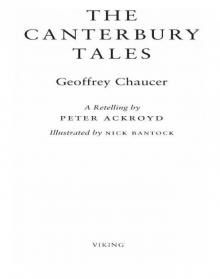 The Canterbury Tales
The Canterbury Tales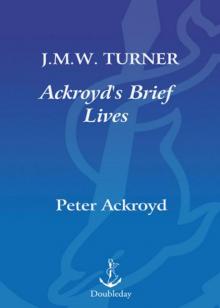 J. M. W. Turner
J. M. W. Turner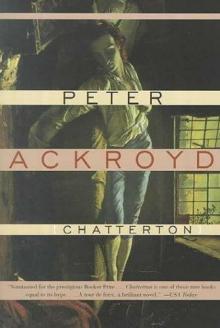 Chatterton
Chatterton The Canterbury Tales – A Retelling
The Canterbury Tales – A Retelling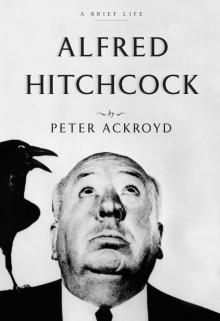 Alfred Hitchcock
Alfred Hitchcock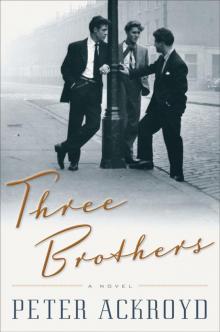 Three Brothers
Three Brothers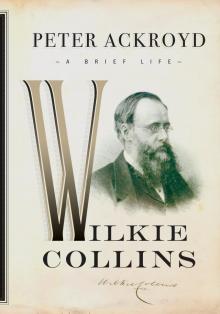 Wilkie Collins
Wilkie Collins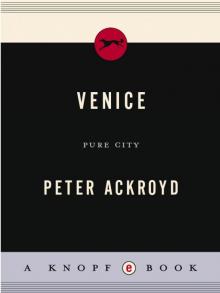 Venice
Venice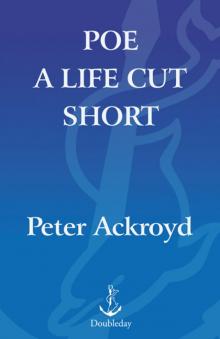 Poe
Poe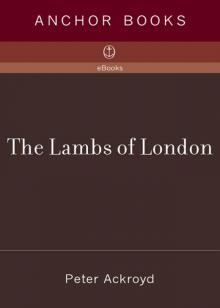 The Lambs of London
The Lambs of London London
London Queer City
Queer City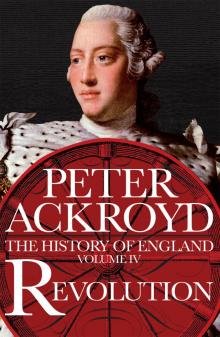 Revolution, a History of England, Volume 4
Revolution, a History of England, Volume 4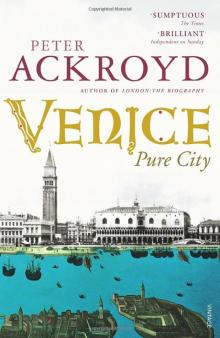 Venice: Pure City
Venice: Pure City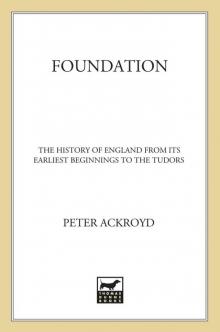 Foundation
Foundation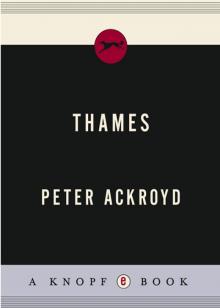 Thames
Thames The Plato Papers
The Plato Papers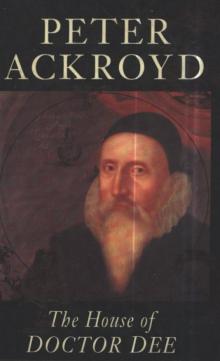 The house of Doctor Dee
The house of Doctor Dee Rebellion: The History of England from James I to the Glorious Revolution
Rebellion: The History of England from James I to the Glorious Revolution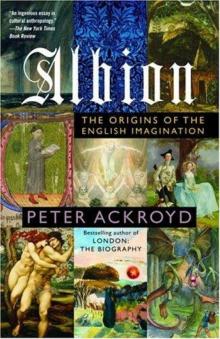 Albion: The Origins of the English Imagination
Albion: The Origins of the English Imagination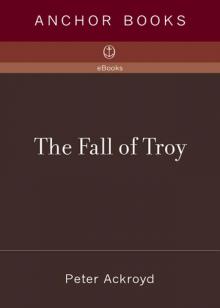 The Fall of Troy
The Fall of Troy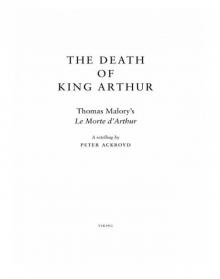 The Death of King Arthur
The Death of King Arthur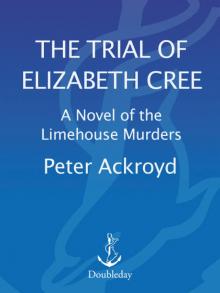 The Trial of Elizabeth Cree
The Trial of Elizabeth Cree London: The Biography
London: The Biography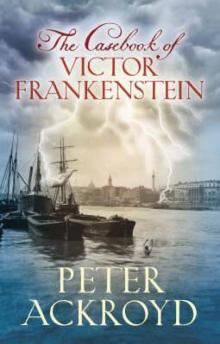 The Casebook of Victor Frankenstein
The Casebook of Victor Frankenstein Hawksmoor
Hawksmoor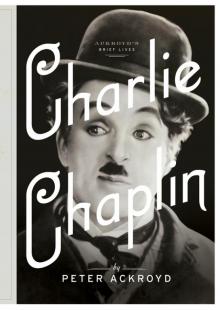 Charlie Chaplin
Charlie Chaplin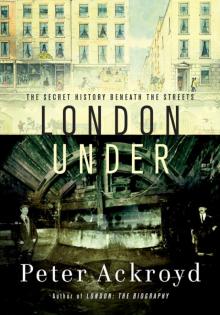 London Under
London Under